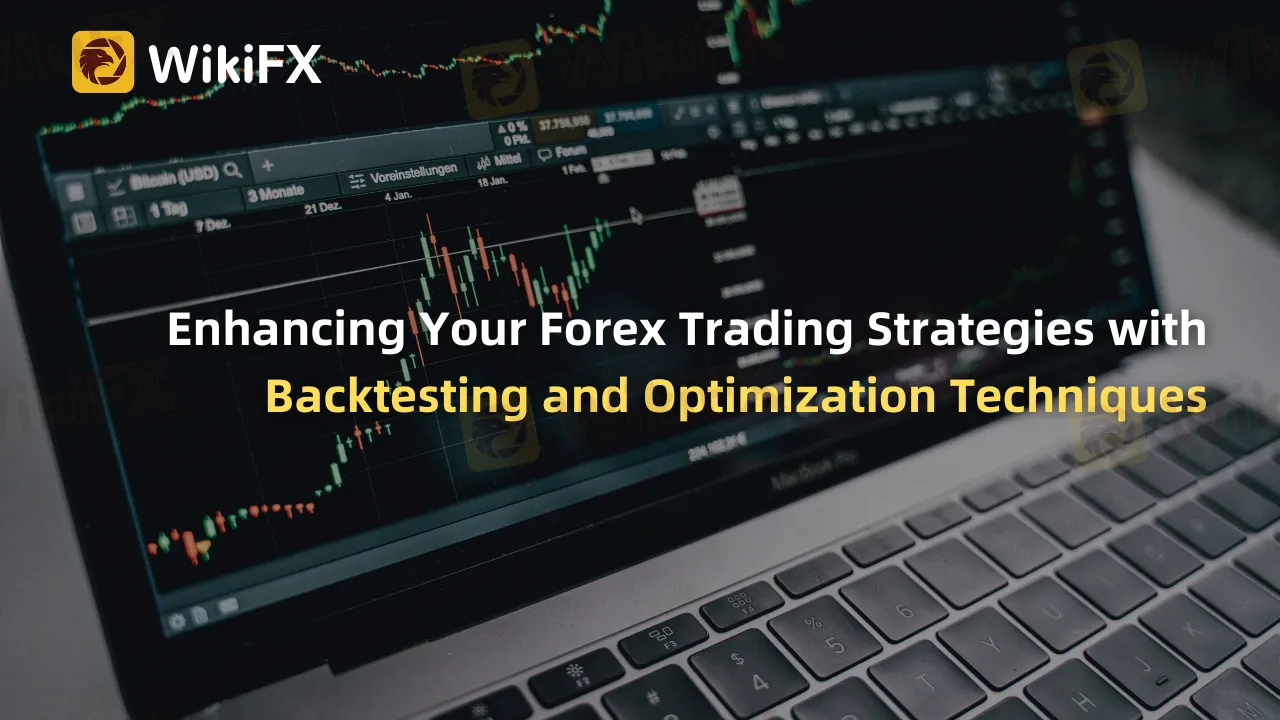简体中文
繁體中文
English
Pусский
日本語
ภาษาไทย
Tiếng Việt
Bahasa Indonesia
Español
हिन्दी
Filippiiniläinen
Français
Deutsch
Português
Türkçe
한국어
العربية
Enhancing Your Forex Trading Strategies with Backtesting and Optimization Techniques
Abstract:Backtesting and optimization are important aspects of forex trading to build, evaluate, and enhance trading strategies. Traders can use historical data and realistic assumptions to fine-tune their strategies and find a balance between profitability and risk. Software tools automate the process and traders should continuously evaluate and adjust their strategies to adapt to changing market conditions.

The forex market is a complex, fast-paced financial environment in which dealers purchase and sell currencies. To thrive in this environment, effective trading techniques that have been carefully tested and adjusted are required. Backtesting and optimization are two essential components of a successful forex trading strategy, enabling traders to assess the performance of their systems and fine-tune them for optimal profitability. This essay will go into the complexities of backtesting and optimization, providing a thorough grasp of these critical areas of forex trading.

Backtesting Fundamentals
Backtesting is the practice of replicating a trading strategy and evaluating its performance using past market data. It entails applying a set of criteria and circumstances to historical pricing data to evaluate how well a trader's approach might have done in the past. Traders may get insights into the strategy's strengths and shortcomings by examining the backtest results, enabling them to fine-tune it for higher performance.
a. Data Quality: A successful backtest is dependent on accurate, high-quality historical pricing data. The more detailed and exact the data, the more accurate the evaluation of a trading strategy's probable performance.
b. Realistic Assumptions: When backtesting, it is critical to employ realistic assumptions, such as accounting for trading expenses like spreads, fees, and slippage. This guarantees that the backtesting findings are as near to real-world trading situations as feasible.
c. Robustness: A robust backtest takes into account various market situations, such as trending or range markets, to verify that the strategy performs effectively in a number of scenarios.
The Value of Optimization
The process of improving a trading strategy in order to increase its performance is known as optimization. This entails altering the strategy's parameters, such as entry and exit rules or indicator settings, to find the best balance of profitability and risk. Traders may use optimization to determine the optimal version of their strategy, ensuring they are ready for ever-changing market circumstances.

Key Optimization Considerations
a. Overfitting: While optimization is important, it is critical to prevent overfitting. When a strategy is very fine-tuned to previous data, it is less likely to perform well in future market situations. Out-of-sample testing, which entails assessing the strategy on data that was not utilized in the original backtesting, should be used by traders to avoid overfitting.
b. Risk Management: Risk management should be considered during optimization. A strategy may yield great profits, but if it includes excessive risk, it may not be long-term sustainable. Traders should strive for a balance of risk and return to ensure they can survive market changes.
The Function of Software Tools
Backtesting and optimization software tools play an important part in the process, automating computations and expediting analysis. These tools may vary from basic spreadsheet programs to professional forex trading software like MetaTrader or TradingView. Using software tools may help traders make better-informed judgments about their strategies by saving time and improving the accuracy of the backtesting and optimization process.
Continuous Enhancement
It is critical to understand that backtesting and optimization are not one-time events. Market circumstances are continuously changing, so a plan that works today may not work tomorrow. To maintain consistent outcomes, traders should examine their methods on a regular basis, re-evaluate their performance, and tweak them as appropriate.
Conclusion
Backtesting and optimization are important parts of forex trading since they allow traders to build, assess, and enhance their methods for maximum profit. Traders may make educated judgments and continuously improve their trading algorithms by appreciating the value of high-quality data, reasonable assumptions, and the possible perils of overfitting. Accepting the iterative process
Download and install the WikiFX App on your smartphone to stay updated on Forex trading education.
Download the App here: https://social1.onelink.me/QgET/px2b7i8n

Disclaimer:
The views in this article only represent the author's personal views, and do not constitute investment advice on this platform. This platform does not guarantee the accuracy, completeness and timeliness of the information in the article, and will not be liable for any loss caused by the use of or reliance on the information in the article.
Read more

Top 10 Trading Indicators Every Forex Trader Should Know
Master the top 10 Forex trading indicators to analyze real-time Forex quotes, trends, and market signals. Learn strategies to boost accuracy and avoid mistakes.

Why Do You Feel Scared During Trade Execution?
Trade execution is a pivotal moment for traders. It is when analysis turns into action, and potential profits or losses become reality. However, for many traders, this moment is accompanied by fear. Why does this happen, and how can you address it?

WikiEXPO Global Expert Interview: Simone Martin—— Exploring Financial Regulation Change
In the midst of financial innovation and regulation, WikiGlobal, the organizer of WikiEXPO, stays abreast of industry trends and conducts a series of insightful and distinctive interviews on pivotal topics. We are delighted to have the privilege of inviting Simone Martin for an in-depth conversation this time.

MultiBank Group Wins Big at Traders Fair Hong Kong 2024
Discover how MultiBank Group, a global leader in financial derivatives, secured three prestigious awards at Traders Fair Hong Kong 2024, highlighting its innovative trading solutions and industry excellence.
WikiFX Broker
Latest News
Geopolitical Events: What They Are & Their Impact?
Top 10 Trading Indicators Every Forex Trader Should Know
Why Do You Feel Scared During Trade Execution?
Currency Calculator


